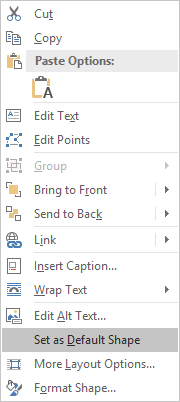
Note: If you want your new style to appear in all new Word. Your new style will now appear in the Styles gallery. In the Create New Style from Formatting dialog box, give your style a name and click OK. In the mini toolbar that appears, click Styles, and then click Create a Style. Any existing and new footnotes will have this style as well. Right-click the text on which you want to base a new style. The style will change and become the default but only in this document.
CHANGE DEFAULT STYLE WORD 2016 UPDATE
Choose Update Footnote Text to Match Selection from the list.


Right mouse click the Footnote Text style .In the Save workbooks section on the left, select an option from the. Note: Most of the styles in Word are based on the Normal style. Make any changes that you want, and then click Default. On the Format menu, click Font, and then click the Font tab. Click Save in the list of items on the left. Open the template or a document based on the template whose default settings you want to change. On the backstage screen, click Options in the list of items on the left. You can also modify the spacing, colour and anything else you can do with text. To begin, open an existing Office file or create a new one. Select the text in the Footnote and using the Home tab, choose your Font style and size.There are a few ways to do this but this is the easiest. With the text in the Footnote selected, you should see the style (Footnote Text) highlighted (3) with a blue box around it..A styles pane appears at the right of your screen. Click the Dialog box launcher icon (1) in the bottom right corner of the group (See diagram).From the Home tab, in the Styles group (Style Gallery).The footnote Style probably won't appear in the Style Gallery on the Home tab, so you need to locate it in the Styles pane. You can change the Footnote text to a different Font and/or size using its own Style (called Footnote Text), so it's just a matter of locating and modifying the style. Click Set as Default at the bottom left corner. Select one from the given templates or create one of your own by entering the required measurements. Now, instead of clicking Margins, click Size. Follow steps 1 to 3 just like mentioned above. Modify the font settings as desired, then select Set As Default as shown below. Select the expand icon underneath Home > Font as shown below. In most cases, this will be Blank document. Open a new document of the template you would like to update the default settings for. In the popping out Theme or Stationery dialog box, click to select the new created stationery in the Choose a Theme list box, and click the OK buttons successively to close all dialog boxes.įrom now on, when you click Home > New Email to create a new email in Outlook, the specified stationery will be applied to the new email automatically.By default your Footnote text is the same Style as your Normal style but with a smaller font size, usually 10pt. Here’s how you can change the default size of a page in MS Word 2016. Word 2016 Word 2010/2013 Word 2007 Word 2003 and Word XP Word 2016.

Now the Signatures and Stationery dialog box comes out, please click the Theme button. In the Outlook Options dialog box, click Mail in the left bar, and then click the Stationery and Fonts button under the Compose messages section. Click File > Options to open the Outlook Options dialog box.Ĥ. So far, you have created a custom stationery in Outlook.

In the opening Save As dialog box, please do as follows: (1) Open the stationery folder with pasting the address of %appdata%\microsoft\stationery into to the Address box and pressing the Enter key (2) Type a name for the new stationery in the File name box (3) Select HTML from the Save as type drop down list (4) Click the Save button. Compose the new email, and then click File > Save As.Ģ. In the Mail view, click Home > New Email to create a new email. Please follow below roundabout method to change the default email template in Outlook.ġ.


 0 kommentar(er)
0 kommentar(er)
